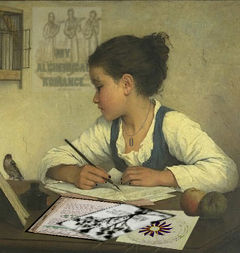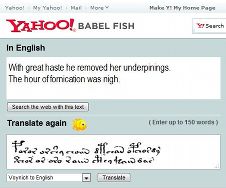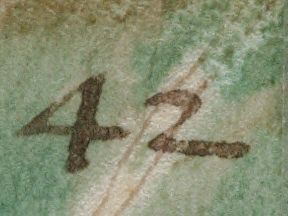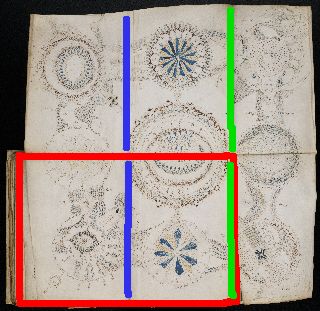First things first: I loved Douglas Rushkoff’s book “Coercion” (2000), and so have been looking forward to his upcoming take on corporatism “Life Inc” (due June 2009). But when I read his recent blog entry on the economy, I have to admit that my heart sank somewhat.
Rushkoff’s starting point there is that we working peons been playing a lose-lose game for the last five hundred years – that from the Renaissance onwards, capitalism was a Ponzi scheme expressly designed to make the rich richer while keeping the poor in their place.
Well, duh. This should only really be revelatory to those who have spent no time at all thinking about what money does, or who have perhaps spent too much time in the toxic companionship of economists (who studiously ignore the whole socio-political aspect of capital, preferring instead to look at flows of numbers). It’s why debasing the coinage has always been such a heinous crime – only kings and queens (oh, and central banks now) are allowed to do anything as foolish as that. And all of this is an issue that has been going on not just since 1500 or so, but for millennia.
OK, so control over money is perhaps the most raw expression of power going: but why try to pin the blame for all that on the Renaissance? Well… perhaps I ought to let you into a secret. To every modern historian’s ears, there are certain keywords and keyphrases that are a dead giveaway that someone has no real idea what they are talking about. My own list:-
- Dark Ages (this was when, exactly? It depends who you ask, basically)
- Middle Ages (a fiction humanists concocted to make themselves seem cool)
- Renaissance (a fiction Jacob Burckhardt concocted to justify his research programme)
- Leonardo da Vinci (a few good pictures but basically zero influence for centuries)
- Rise and fall of civilizations (Spengler’s historical cycles that don’t really exist)
- La longue duree (Braudel’s neat macrohistorical notion that doesn’t really exist)
- Nazi (comparisons with the Nazis normally show that someone has lost an argument)
These are all historiographical cargo cults, too frequently venerated by historians simply by dint of the amount of historical graft that has been applied to them – and all too frequently appropriated by cultural writers in the way gullible Victorian historians all too often did to rig their own moral evidential votes, to falsely justify their pre-formed conclusions.
So when I hear Rushkoff talk of “a centralized economic plan [that] ravaged the real world over the past 500 years“, and that exclusive royal charters distorted the marketplace leading directly to modern hypercapitalism, please excuse me if I just don’t buy into it. Yes, such charters very probably fanned the flames of the War of Independence: but did they lead to Bear Stearns? No, I don’t think so.
And can it be true (as Rushkoff claims) that the cathedrals of the Middle Ages form some kind of glaring ‘elephant-in-the-room’ counter-example to modern global capitalism, in that many such cathedrals were financed by local merchants rather than by proto-robber-barons?
Actually, no again. These constructions are relics of what some might argue is the greatest Ponzi scheme ever confected: Purgatory. Many of these (literally) awe-ful monstrosities, then, were financed by the sale of indulgences to redeem yourself or your recently-deceased (but sinful) relatives: many were also built with tithed labour (as I recall). Basically, it was not some unspecified Renaissance financial model that killed them off, it was the Reformation, which saw selling indulgences in this way as morally depraved.
[As an aside, Pope John Paul II declared in 1999 that Purgatory was not actually a physical place, but rather a “condition of existence” – nice to see the Church moving with the times. Would Saatchi & Saatchi have instead suggested rebranding it as “Hell Lite”?]
Rushkoff also goes on about local currencies, the kind of thing anti-capitalists and collectives have been using for decades. What… like the pound, then? The US Dollar only has its place as a world trading currency because Far East countries have collectively made it so – and the day when that particular monetary ‘hegemony’ ceases can surely not be that far away. The view from outside New York is quite different, I’d say.
Just because I disagree with Rushkoff and I’ve got an MBA doesn’t make me an apologist for the system. In my opinion, the fundamental distortion in the system is the investment banks – how can you get sound advice from someone who benefits from any upsides to your trades but which has no exposure to any downsides? Future returns on investment get valued in the present relative to each other in terms of risk and reward (and investor appetite): but the investment banks gamed that system to the point that all that was important was volume. And let’s not even talk about the chillingly mad economics of IPOs either, or venture capitalists’ über-bubble economics.
Rushkoff loves the hacker counter-culture ethic, and plainly wants to catalyse other people into applying it to ever more mainstream parts of society: he wants us all to be culture hackers, which is not a bad thing. Yet I think the big question here is how corporates (our pension funds, basically) can get by without investment banks’ ever-morphing range of financial products – not hacking the markets, but hacking the marketplace. Get that right, and we all stand a bit more of a chance.



